
Любители авиации часто восхищаются огромными терминалами и разросшимися взлетно-посадочными полосами, но мало кто понимает, сколько территории потребляют крупнейшие аэропорты мира. Самый большой аэропорт в нашем списке может проглотить весь Манхэттен и все еще есть место для десерта!
Когда путешественники спешат через терминалы, чтобы поймать связь, они редко считают, что они перемещаются по некоторым из крупнейших построенных сред человечества.
Крупнейшие аэропорты мира по площади
Вот 10 лучших аэропортов мира по площади в 2025 году.
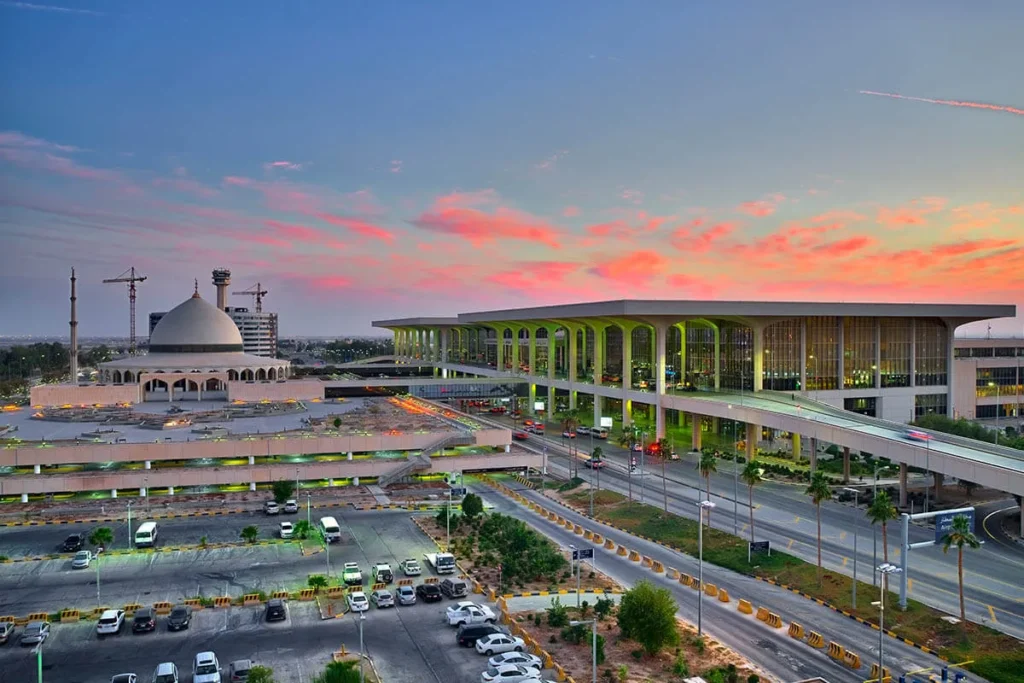 Международный аэропорт имени короля Фахда, Даммам; фото KFIA
Международный аэропорт имени короля Фахда, Даммам; фото KFIA1. Международный аэропорт имени короля Фахда (DMM) — Даммам, Саудовская Аравия — 776 км2 (299,61 миль2)
Международный аэропорт имени короля Фахда (DMM) доминирует в авиационном ландшафте как бесспорный титан аэропортовой недвижимости. Охватывая удивительный 776 квадратных километровЭтот гигант занимает почти столько же земли, сколько пять районов Нью-Йорка вместе взятых.
Первоначально спроектированная как авиабаза США во время региональных конфликтов, саудовское правительство превратило ее в коммерческий центр, который официально открылся в 1999 году.
Несмотря на свою огромную площадь, King Fahd International (DMM) обслуживает только несколько компаний. 10 миллионов пассажиров в годПоместив его за пределы 100 самых загруженных аэропортов во всем мире.
Аэропорт располагает замечательными удобствами, в том числе мечеть способный вместить 2000 верующих одновременно. Возможно, самым интригующим является автономное жилое сообщество аэропорта. Он завершается с Жилье для 3000 человекЭто делает его по сути небольшим городом. Массивные теплицы выращивают все ландшафтные растения, используемые на объекте, создавая самоподдерживающуюся экосистему в этом авиационном гиганте.
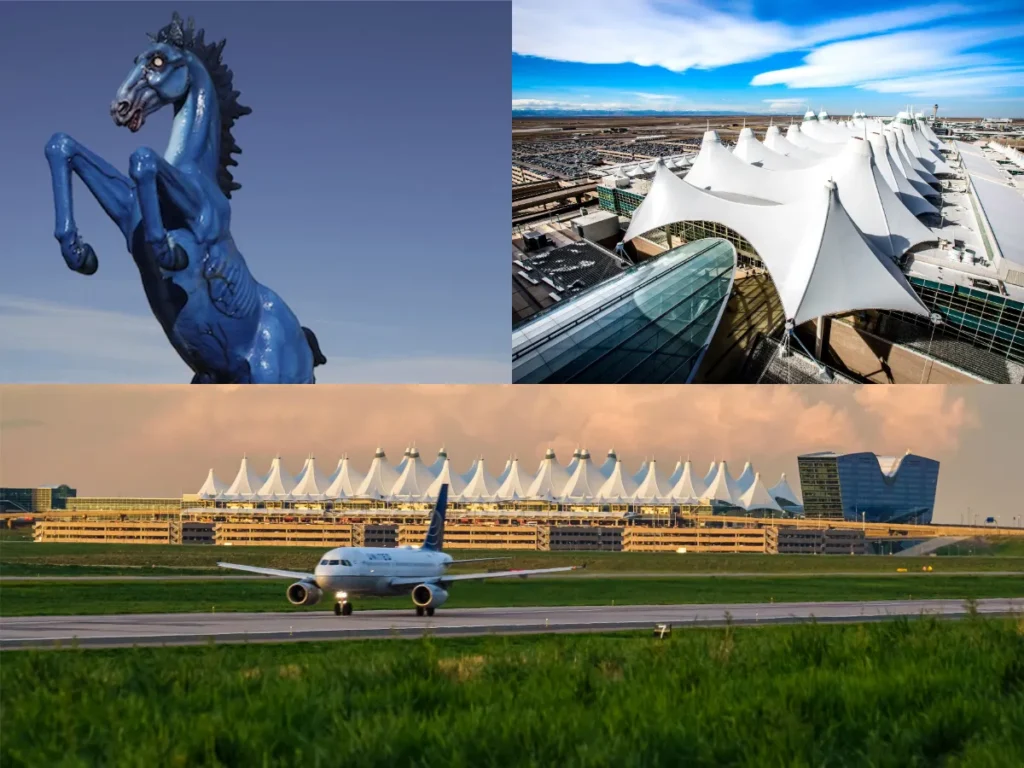 Международный аэропорт Денвера; Фото аэропорта Денвера; Составлено авиацией A2Z
Международный аэропорт Денвера; Фото аэропорта Денвера; Составлено авиацией A2Z2. Международный аэропорт Денвера (DEN) — Денвер, Колорадо, США — 135,7 км2 (53,09 миль2)
Международный аэропорт Денвера (DEN) Крупнейший аэропорт Северной Америки занимает второе место в мире по площади 135,7 квадратных километров. Открытый в 1995 году, DEN был разработан со значительным пространством для расширения — предвидение, которое оказалось бесценным, поскольку количество пассажиров продолжает расти.
Знаменитая белая растяжимая крыша аэропорта имитирует заснеженные Скалистые горы, которые служат его фоном. DEN обрабатывает 69 миллионов пассажиров в годЭто делает его не только огромным, но и способным к эксплуатации.
Denver International (DEN) получил известность благодаря многочисленным Теория заговора вокруг его строительства.
Аэропорт принял эту необычную репутацию, время от времени играя на слухах со ссылками в своих маркетинговых материалах.
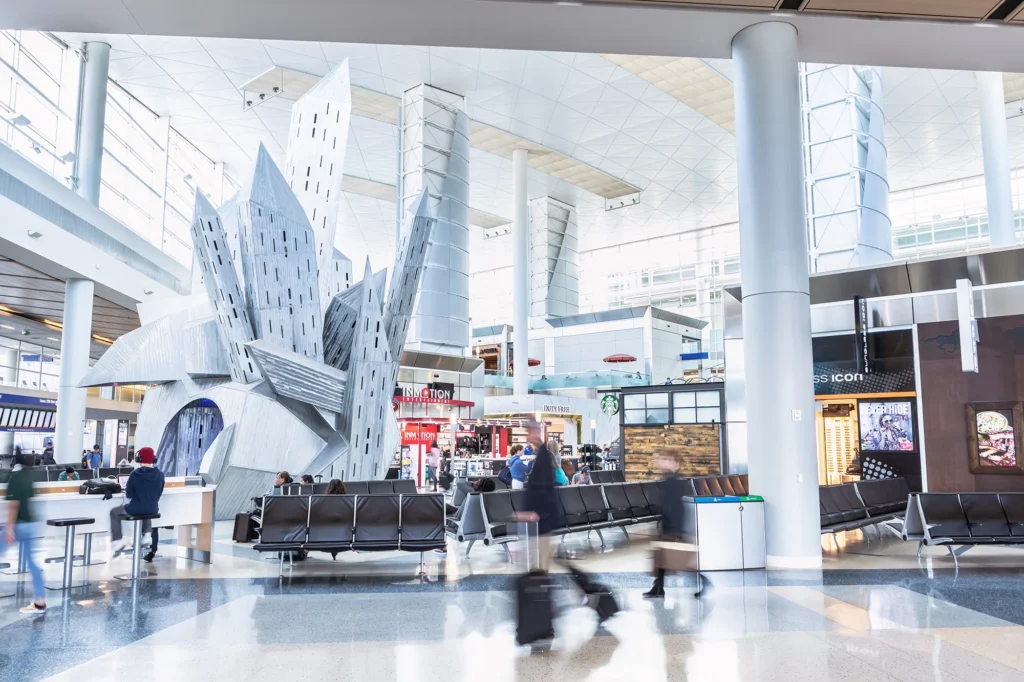 Международный аэропорт Даллас Форт-Уэрт; Фото: DFW Аэропорт
Международный аэропорт Даллас Форт-Уэрт; Фото: DFW Аэропорт3. Международный аэропорт Даллас/Форт-Уэрт (DFW) — Даллас, Техас, США — 69,6 км2 (26,88 миль2)
Занимает почти 70 квадратных километров между городами, Даллас и Форт УортМеждународный аэропорт Даллас/Форт-Уэрт (DFW) занимает третье место в мире по площади суши. С момента своего открытия в 1974 году он превратился в основной центр American Airlines. Он служит важным шлюзом между Соединенными Штатами и Латинской Америкой.
Полукруглая конструкция терминала DFW создает эффективный поток, который Минимизировать пешеходные расстояния Несмотря на большие размеры аэропорта. Объект имеет 5 терминалов Он подключен к автоматизированной системе перемещения людей под названием Skylink. Он движется со скоростью до 35 миль в час, что делает его одной из самых быстрых транзитных систем аэропорта во всем мире.
Аэропорт сохраняет своисобственный почтовый индекс и почтовый сервис, по существу функционирующий как независимый муниципалитет.
Экологическая устойчивость представляет собой основной фокус, при этом DFW становится основным приоритетом. Первый углеродно-нейтральный аэропорт в Северной Америке в 2020 году Объект включает в себя значительные природные территории, в том числе охраняемые водно-болотные угодья, которые обеспечивают среду обитания для различных видов дикой природы в этом городском авиационном центре.
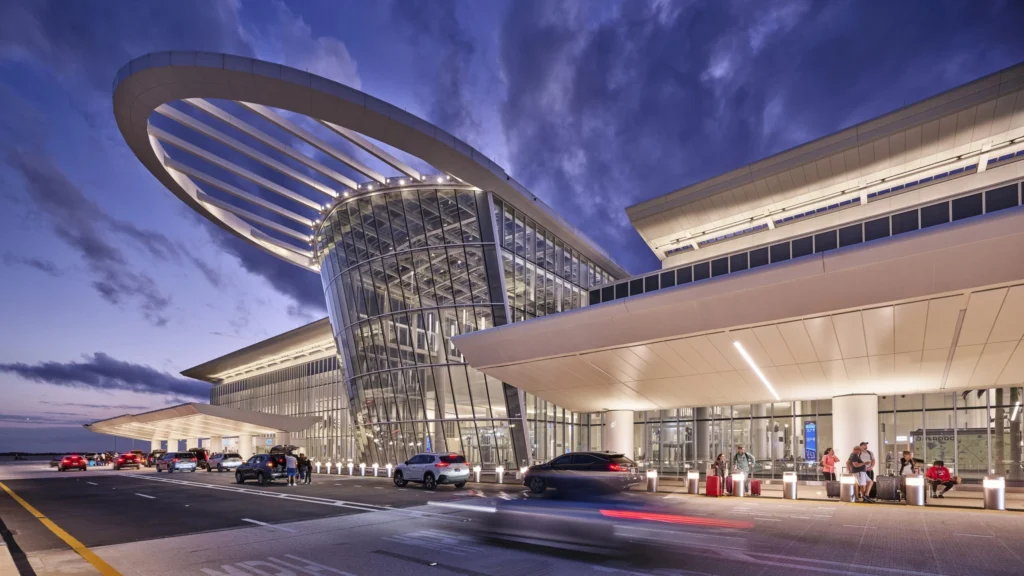 Терминал C международного аэропорта Орландо, фото: HNTB
Терминал C международного аэропорта Орландо, фото: HNTB4. Международный аэропорт Орландо (MCO) — Орландо, Флорида, США — 53,8 км2 (20,78 миль2)
Международный аэропорт Орландо (MCO) 54 квадратных километра Он служит главными воротами в туристическую империю центральной Флориды. Первоначально военный аэродром назывался База ВВС МакКой (что объясняет код аэропорта MCO), он был преобразован в коммерческий аэропорт в 1974 году. 50 миллионов пассажиров в год.
Дизайн аэропорта отражает атмосферу отдыха во Флориде, с пальмами, водными особенностями и обильным естественным светом во всех его терминалах. Компания Orlando International (MCO) разработала концепцию интегрированных отелей. На сайте Hyatt Regency, обеспечивая бесшовное размещение для путешественников.
Как неофициальная входная дверь Disney World, MCO стал одним из первых аэропортов, которые включили тематический розничный опыт. Аэропорт поддерживает большие заповедные зоны в своих границах, аллигаторы иногда обнаруживаются в водах вблизи взлетно-посадочных полос - явно Флоридский аэропорт!
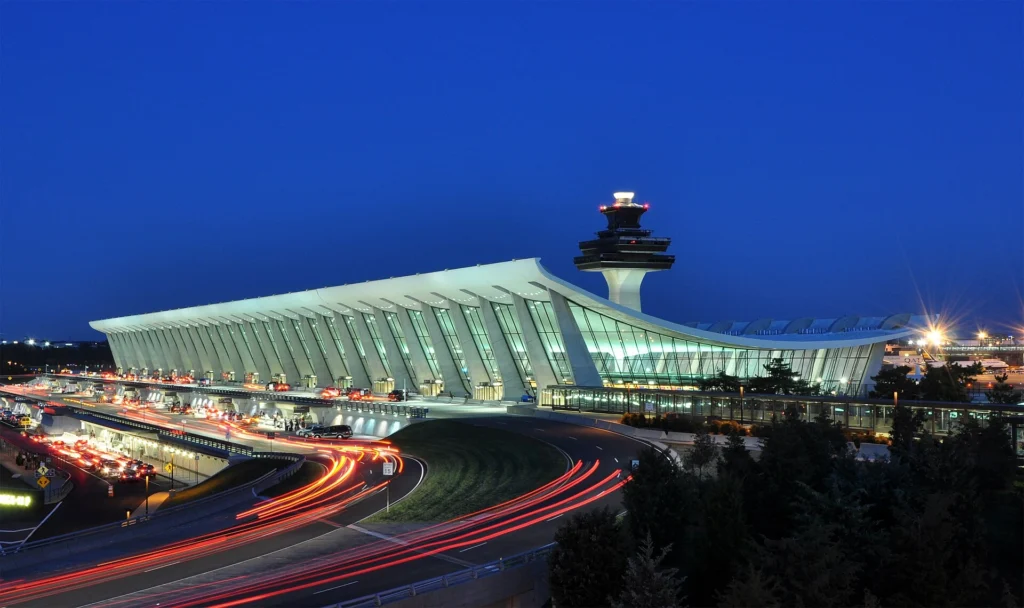 Международный аэропорт Вашингтон Даллес, фото Википедия
Международный аэропорт Вашингтон Даллес, фото Википедия5. Международный аэропорт Вашингтон Даллес (IAD) — Вашингтон, округ Колумбия, США — 48,6 км2 (18,75 миль2)
Международный аэропорт Вашингтон-Даллес (IAD) занимает почти 49 квадратных километров в Северной Вирджинии. Он служит главными международными воротами в столицу США. Открытый в 1962 году, Даллес имеет отличительный главный терминал с подвесной крышей, которая стала архитектурной иконой.
Даллес получил известность благодаря своей Уникальные мобильные лаунджиАвтобусные транспортные средства, которые перевозят пассажиров между терминалами и самолетами. Хотя в значительной степени заменена подземной системой AeroTrain, некоторые мобильные залы остаются в эксплуатации для удаленных ворот, сохраняя эту отличительную часть истории авиации.
Аэропорт служит живым музеем развития авиации, с операциями, начиная от широкофюзеляжных самолетов последнего поколения и заканчивая историческими самолетами, выставленными соседним Национальным центром музея авиации и космонавтики. Здесь хранятся многочисленные авиационные сокровища, в том числе Космический шаттл Открытие и Энола Гей B-29 Бомбардировщик, создающий беспрецедентный авиационный комплекс.
 Фото: Arne Müseler / www.arne-mueseler.com, CC BY-SA 3.0 de, https://commons.wikimedia.org/w/index.php?curid=84791878
Фото: Arne Müseler / www.arne-mueseler.com, CC BY-SA 3.0 de, https://commons.wikimedia.org/w/index.php?curid=847918786. Beijing Daxing International Airport (PKX) — Пекин, Китай — 46,6 км2 (18 миль2)
Международный аэропорт Пекин Дасин (PKX) Новейшее авиационное чудо Китая, охватывающее почти 47 квадратных километров южнее Пекина. Открытый в сентябре 2019 года для облегчения заторов в международном аэропорту Пекина, Daxing воплощает авиационные амбиции Китая с его футуристическим дизайном и огромным потенциалом.
Здание терминала охватывает почти 700 000 квадратных метровэквивалентно 97 футбольных полей— сделать его Крупнейший в мире одноструктурный терминал аэропорта. Его отличительная форма морской звезды оптимизирует пассажиропоток, гарантируя, что путешественники могут добраться до своих ворот в течение 8 минут от центрального узла, несмотря на огромные размеры терминала.
Daxing включает в себя передовые технологии, включая распознавание лиц для бесшовной обработки и систему багажа, способную обрабатывать 20 000 предметов в час. Аэропорт соединяется непосредственно с Пекином через специальную высокоскоростную железнодорожную линию. Добраться до центра города за 19 минут. По прогнозам, Daxing станет самым загруженным аэропортом в мире к 2040 году, обслуживая более 100 миллионов пассажиров в год.
 Межконтинентальный аэропорт Джорджа Буша; Фото: IAH
Межконтинентальный аэропорт Джорджа Буша; Фото: IAH7. Межконтинентальный аэропорт Джорджа Буша (IAH) — Хьюстон, Техас, США — 44,5 км2 (17,19 миль2)
Межконтинентальный аэропорт Джорджа Буша (IAH) 44,5 квадратных километров К северу от Хьюстона, служа важнейшими международными воротами для южных Соединенных Штатов. Открыт в 1969 году, аэропорт функционирует как крупный аэропорт. центр для United Airlines (UA) и приблизительно 45 миллионов пассажиров ежегодно.
Объект включает в себя 5 терминалов, соединенных подземной системой поездов и наземным транспортным средством. Терминал E имеет один из крупнейших международных центров прибытия в стране, ежедневно обрабатывая тысячи глобальных путешественников.
Обширная сеть взлетно-посадочных полос аэропорта включает в себя одну взлетно-посадочную полосу протяженностью 12 000 футов, способную обрабатывать любые самолеты, находящиеся в эксплуатации!
Bush Intercontinental (IAH) поддерживает приверженность устойчивому развитию с одним из крупнейших аэропортов. Солнечные установки в Соединенных Штатах.
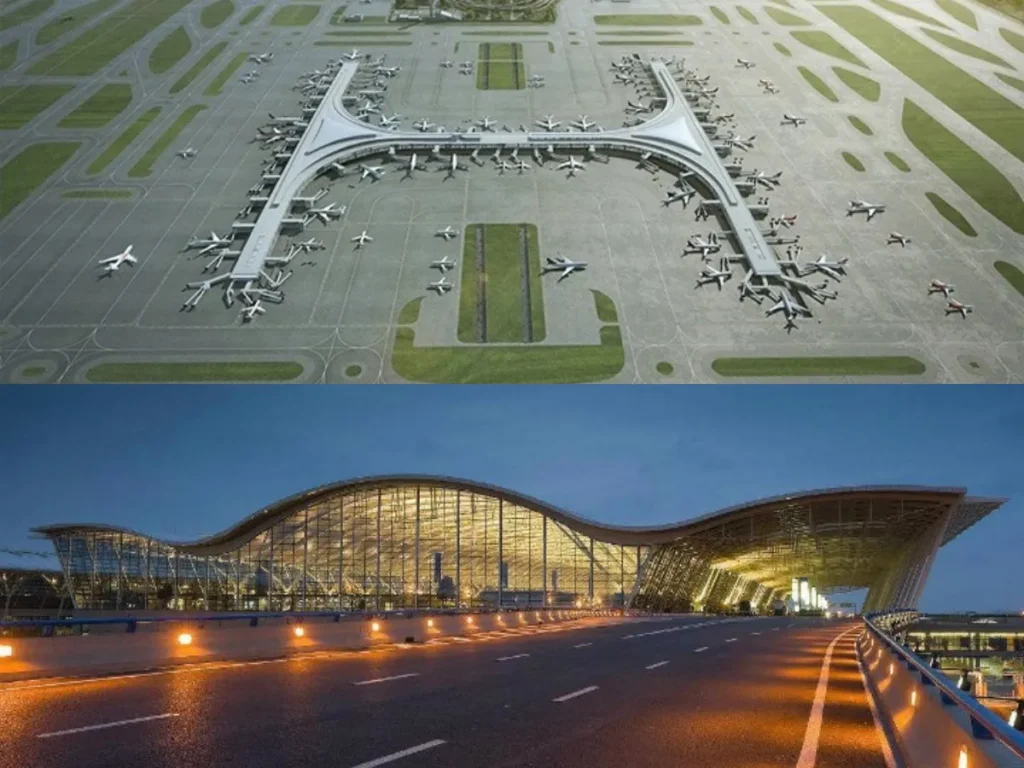 Международный аэропорт Шанхай Пудун; Фото VisitShanghai; Разработчик: Aviation A2Z
Международный аэропорт Шанхай Пудун; Фото VisitShanghai; Разработчик: Aviation A2Z8. Shanghai Pudong International Airport (PVG) — Шанхай, Китай — 39,9 км2 (15,4 миль2)
Шанхайский международный аэропорт Пудун (PVG) занимает почти 40 квадратных километров К востоку от Шанхая в новом районе Пудун. С момента открытия в 1999 году Пудун превратился в самые загруженные международные ворота материкового Китая. 76 миллионов пассажиров ежегодно перед пандемическими сбоями.
Аэропорт имеет два основных пассажирских терминала, соединенных системой электропоезда. Самая яркая его особенность – 632-метровая Шанхайская башня- является самым высоким зданием Китая и служит одновременно навигационный ориентир для пилотов Архитектурный символ экономического подъема региона.
Пудун был пионером в коммерческой эксплуатации технологии магнитной левитации, что делает его самым быстрым в мире соединением с аэропортом.
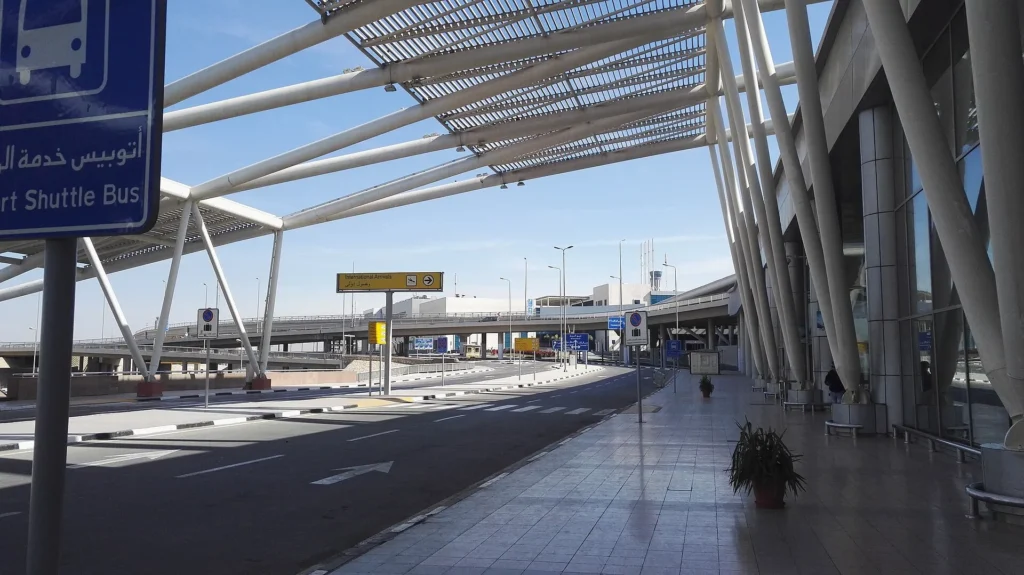 Международный аэропорт Каира; Фото Википедия
Международный аэропорт Каира; Фото Википедия9. Каирский международный аэропорт (CAI) — Каир, Египет — 36,3 км2 (14 миль2)
Международный аэропорт Каира (CAI) 36,3 км2 К северо-востоку от столицы Египта, он является вторым по загруженности аэропортом Африки и важным связующим звеном между Африкой, Ближним Востоком и Европой. Основанный в 1945 году, аэропорт значительно расширился, теперь он включает в себя 3 терминала, которые сочетают в себе современную эффективность с египетскими элементами дизайна.
Терминал 3, завершенный в 2008 году, имеет архитектурные мотивы, вдохновленные древнеегипетскими храмами, создавая ощущение места, которое сразу же связывает путешественников с богатым наследием страны. Процессы установки приблизительно 15 миллионов пассажиров в год Является основным хабом EgyptAir (MS).
В аэропорту есть музей, в котором представлены археологические артефакты, обнаруженные во время различных проектов расширения - уникальная особенность, отражающая многоуровневую историю Египта. Его стратегическое расположение делает Каирский международный аэропорт (CAI) естественной остановкой между континентами, и многие авиакомпании используют его в качестве станции дозаправки и смены экипажа.
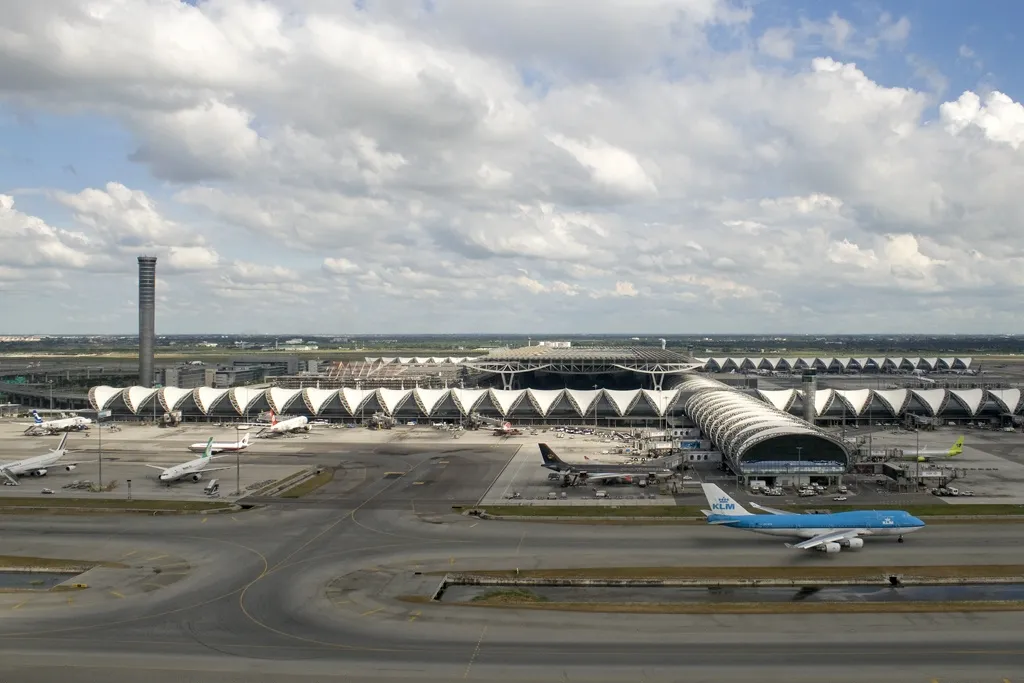 Международный аэропорт Суварнабхуми, Бангкок; Фото Википедия
Международный аэропорт Суварнабхуми, Бангкок; Фото Википедия10. Международный аэропорт Суварнабхуми (БКК) — Бангкок, Таиланд — 32,4 км2 (12,51 миль2)
Международный аэропорт Суварнабхуми (BKK) занимает 32,4 км2 К востоку от Бангкока, завершая наш список крупнейших аэропортов мира. Открытый в 2006 году после десятилетий планирования и строительства, Суварнабхуми (произносится как «су-ван-на-пум»). «Золотая земля» Санскрит, отражающий культурное наследие Таиланда.
Единственный терминал аэропорта входит в число крупнейших в мире, с характерной арочной крышей, предназначенной для выдерживания тропических погодных условий, позволяя естественному свету фильтроваться. Массивные внутренние сады демонстрируют пышную растительность Таиланда, а возвышающиеся 12-метровые скульптуры, изображающие мифологические сцены из эпоса Рамаяны, создают впечатляющее культурное введение в Таиланд.
Суварнабхуми управляет 60 миллионов пассажиров в годЯвляется основным авиационным центром Юго-Восточной Азии. Объект сталкивается с уникальными экологическими проблемами, будучи построенным на территории, известной как «Болото кобры». Несмотря на обширные дренажные системы, сотрудники иногда сталкиваются с змеи Это напоминание о диком ландшафте, который предшествовал этому масштабному инфраструктурному проекту.
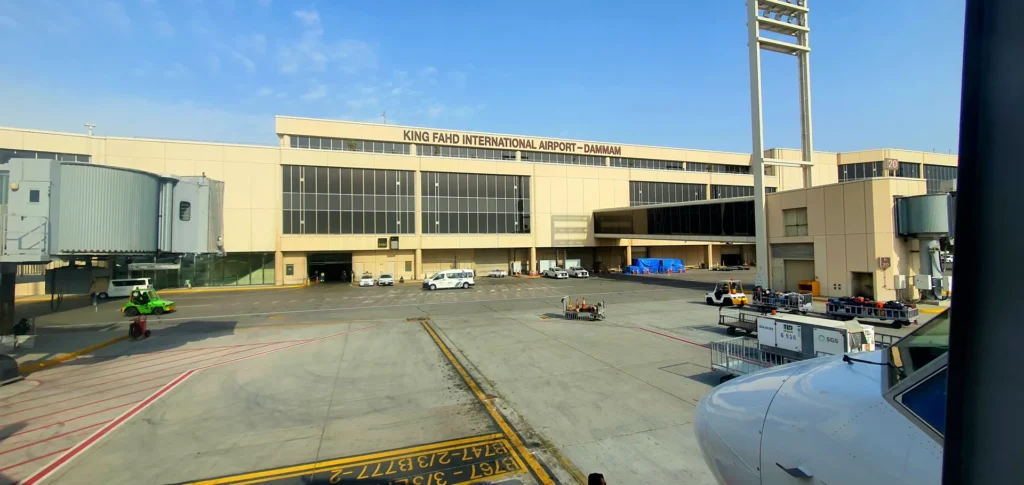 Аэропорт Даммам; Фото Википедия
Аэропорт Даммам; Фото ВикипедияНижняя линия
Путешественники спешат между соединениями или ждут своих следующих рейсов, они редко рассматривают обширные территории под ногами. Эти 10 авиационных гигантов представляют собой нечто большее, чем просто транспортные средства — они функционируют как автономные города со своей инфраструктурой, экономикой и даже экосистемами.
От пустыни короля Фахда до восстановленной болотистой местности Суварнабхуми, каждый огромный аэропорт рассказывает уникальную историю человеческих амбиций, преодолевающих географические ограничения.
В следующий раз, когда вы окажетесь в бесконечных коридорах или на челночных поездах между терминалами, найдите время, чтобы понять, что вы пересекаете один из самых амбициозных инфраструктурных проектов человечества. Эти шлюзы будут продолжать расширяться по мере роста глобальных потребностей в авиации, доказывая, что когда дело доходит до аэропортов, небо вряд ли является пределом.
Оставайтесь с нами. Следуйте за нами в социальных сетях для последних обновлений.
Присоединяйтесь к нам в Telegram Group для последних обновлений авиации. Следуйте за нами в Google News
Топ-10 самых посещаемых стран мира
Топ-10 крупнейших аэропортов мира по площади в 2025 году впервые появился на Aviation A2Z.















